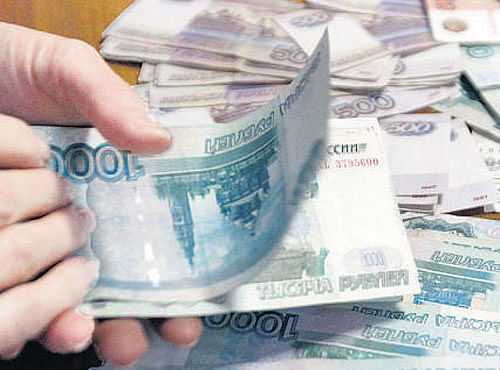
It’s all pain and no gain time for Indian companies which have presence in Russia or trade close to the Commonwealth of Independent States (CIS) countries.
While steel companies like Tata Steel are likely to face tougher competition from CIS steel mills, pharma, oil and textile companies will be worried due to depreciation in their investments and also a likely hit on profitability in the near-term.
According to a report by BNP Paribas, Tata Steel could be hit significantly due to a weaker rouble, which has depreciated 92 per cent against the dollar in 2014 (year to date) as it would mean more exports from the CIS.
“While higher CIS exports would be negative for the broad Indian steel industry, Tata Steel stands to lose the most in our coverage, as 60 per cent of its steel-making capacity is located in Europe, the closest and natural market for CIS mills, the note says.
An email sent to Tata Steel in this regard remained unanswered till the time of going to press.Dr Reddy’s derives 15 per cent of its sales from Russia and other CIS markets. While a weak rouble can have 4-6 per cent impact on Dr Reddy’s earnings as 35 per cent of Russia/CIS sales are unhedged.
However, a strong dollar can partially negate this impact as Dr Reddy’s generates over 40 per cent of its revenue in dollars, according to global brokerage firm Bank of America Merrill Lynch.
No spokesperson from Dr Reddy’s was available for comment in this regard.JB Chemicals and Pharmaceuticals (JBCPL) generated close to 9 per cent of revenue (around Rs 88 crore) from Russia and CIS regions in fiscal 2014.
According to rough estimates of brokerage firm Sharekhan, every 10 per cent fall in currency versus the dollar affects the earnings of JBCPL by 4-5 per cent.
However, the management will be able to renegotiate the long-term contracts under new conditions, and therefore, partially mitigating the currency effect.
In the oil and gas sector, ONGC holds 20 per cent PI in the Sakhalin-I field through ONGC Videsh, which had acquired a stake in the field in July 2001.
During 2013-14, ONGC Videsh’s share of production from the project was 1.488 MMT of oil and 0.576 BCM of gas as compared to 1.37 MMT of oil and 0.650 BCM of gas during 2012-13.
ONGC Videsh had also acquired Imperial Energy Corporation, an independent upstream oil exploration and production company having its main activities in the Tomsk region of Western Siberia, Russia on January 13, 2009 at a total cost of $2.1 billion.
Deccan Herald is on WhatsApp Channels| Join now for Breaking News & Editor's Picks